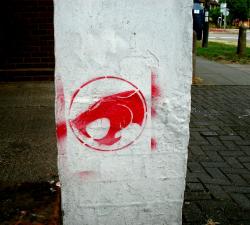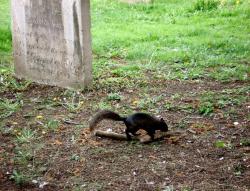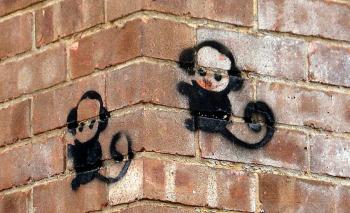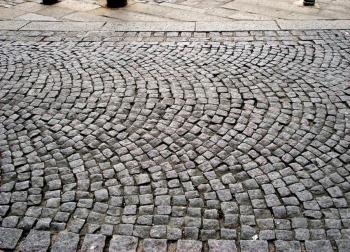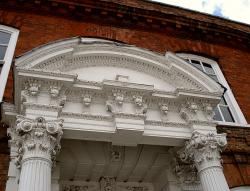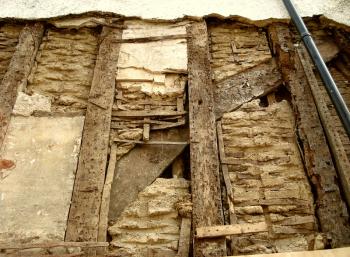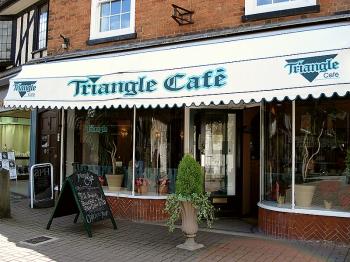Archive for May 2007
St Mary’s Church Font Cover
St Mary’s Church in Hitchin is blessed with a beautiful font cover (Pictured above) Font covers were originally used from 1236 onwards (Ordered by Edmund, Archbisop of Canterbury) as a protection from Sorcery. (“Fontes baptismales sub sera clausi teneantur propter sortilegia”) Some have plain ‘lids’ over the stone fonts or like this one above, very ornate and raised by a cable and pulley system and sometimes counter weights. A lot are kept in this raised position and others actually lowered over the font and only raised for Baptisms. Some font covers did survive the Cromwellian destruction. These iconoclasts were opposed to any ornamentation, decoration or statues. Other font covers are Victorian copies of earlier originals. Whether it is an original or a copy, it is a welcome addition to the church ‘experience’.
Thundercats in Hitchin
Hitchin is either blessed (or cursed, depending on one’s viewpoint) with unusual graffiti. This particular example had memories of the children’s animated television series ‘Thundercats‘ come flooding in to my brain and is at the end of bancroft opposite Bancroft Park. Nostalgia and Art, all in one go. ‘Thunder, Thunder, Thundercats, Hoh’
Melanic Squirrels
People still think that the Letchworth Black Squirrels only exist in Letchworth. Not so! Much to the chagrin of Letchworth residents, they are also in other parts of Hertfordshire such as Hitchin and Stevenage, as well as Cambridgeshire, Buckinghamshire and Bedfordshire. The Letchworth name was a bit of a misnomer. Apparently they were rare and were a local adaptation/phenomenon called Melanic Squirrels due to the fact that they have very high levels of the pigment melanin in them and are in fact only a dark Grey Squirrel. They are not as rare as Albino squirrels though. They’re a local variant. Obviously from the Grey squirrel, but are more aggressive and will attack the Greys (and win) giving them an edge over the Greys, therefore breeding more and increasing their numbers and enlarging their habitat.
Retribution I think, for importing the American Grey Squirrel in 1876 into Cheshire, which decimated the native Brown Squirrel. Evolution in progress and nature bloody in tooth and claw. This particular squirrel was photographed in the graveyard of the beautiful St Mary’s Church in the centre of Hitchin itself.
Monkeys
The photograph is of some graffiti that were sprayed high up on a building that has no easy access and has barbed wire around it. (Royal Mail depot) It’s the footpath that leads from Hermitage Road through to Portmill Lane. I think they’re good. So much better than the usual ‘Spray-Your-Name’ Tags that youngsters usually un-imaginatively do. It’s added a little something to an otherwise plain, uninteresting and never noticed building. (Unfortunately since this has been taken, they are somewhat covered up by a plain and ugly plastic drain pipe)
Market Place
I like this pattern created in the cobblestones of the road that encircles the Market Square (Called ‘Market Place‘)in the centre of Hitchin. It lends it a medieval look. The texture created by the interplay of light and shade and depth is nice. The sound of the cars driving over them is enjoyable too. In short, the whole ‘Experience’ of this unintentional ‘Installation‘ is pleasurable. A ‘Must-See’ for all art enthusiasts.
Modillioned Pediment
The Head or Pediment, is the top bit of the porch and the ‘Modillioned’ bit refers to the scroll and square bits on the head. Often there is fancy ‘Acanthus’ scroll work and block modillions on neo-classical buildings. All of this can be looked up in an architect’s catalogue if you want to know more. (or even ‘Google’ it) This ‘Pediment’ and Porch is the entrance to a very nice building on Bancroft. Used by Phillips Antiques. The inside is even better and I would love to look around and photograph it.
Plaster and Lath
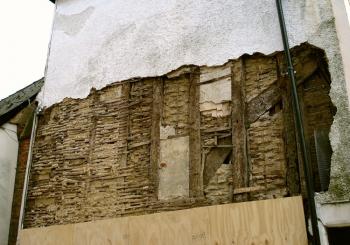
The 17th century building that houses the shop called ‘Fusion’ at 101 Bancroft, now has some absolutely wonderful plaster & lath and timber framing exposed. The lower panel board is covering up a smaller bit of plaster and lath that became exposed when some of the rendering fell off or was knocked off; whereas the upper bit seems to have been exposed deliberately to effect repairs while the shop is refurbished. What a great way to see how medieval (and later) buildings were constructed.
There seem to be a few methods of ‘infilling’ the timber framing known as nogging. It can either be in brick or plaster and lath. In the photograph above, one can see the large timber framing with plaster and lath nogging in between. In the sections of the plaster and lath, the upright ‘studs’ that the horizontal ‘laths’ attach to are then in filled with plaster. A serendipitous ‘find’ to say the least.
The Triangle Café
The photograph above is of the Triangle Café, run by the ever lovely Maree (Originally from sunny Belfast) Here you will get great wholesome, traditional, well cooked food and good service to boot too. The Triangle Café deservedly winning the ‘Hertfordshire Café of The Year’ award.
The building that the café inhabits, is a timber framed 15th century or early 16th century hall house, much altered and refaced in the 18th century. This building was also used as the vicarage to St Mary’s Church opposite it, from 1731 until 1925, when it then became used for shops and offices.

